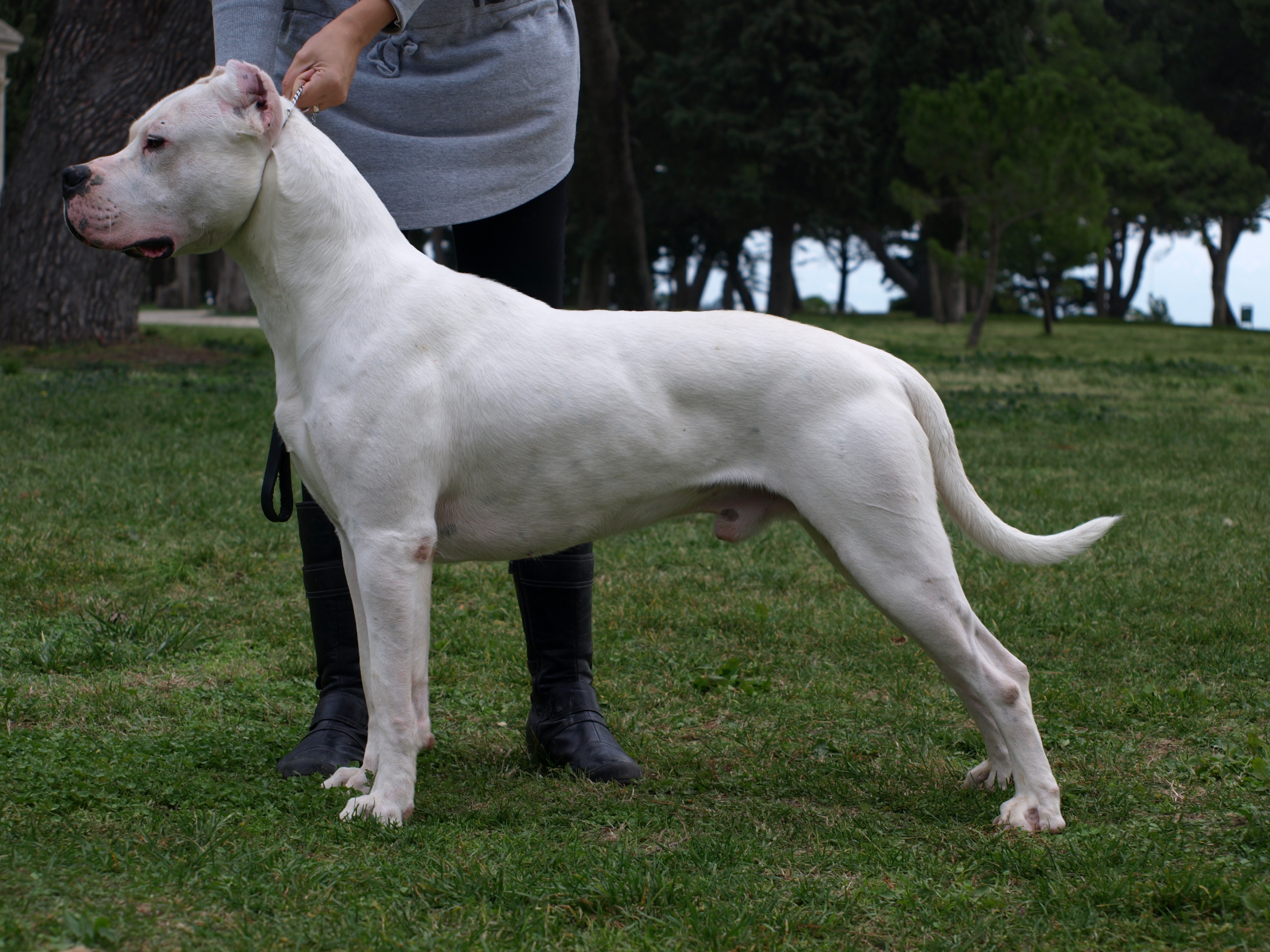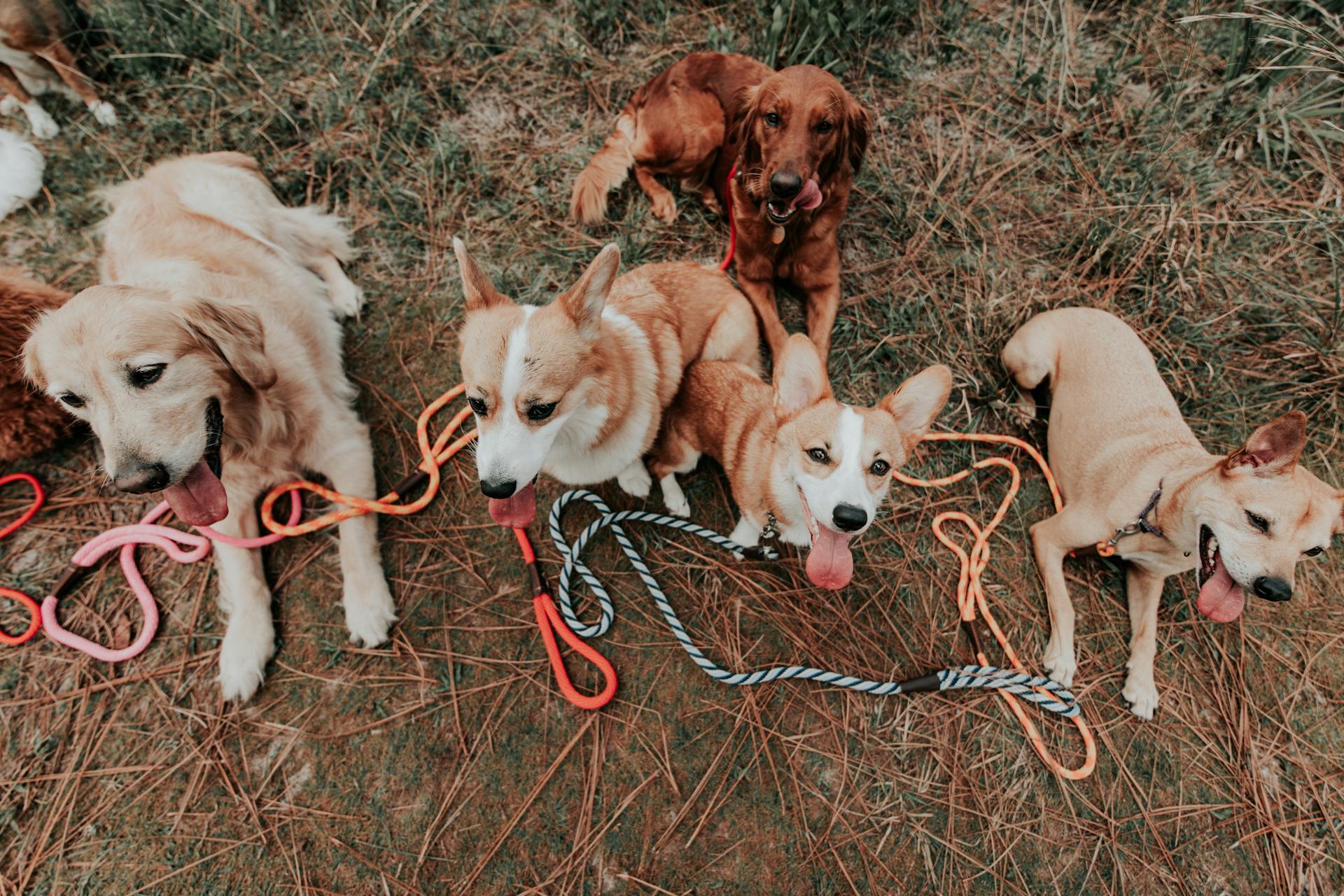
When searching for a reputable Dogo Argentino breeder, it's essential to research their experience and knowledge of the breed. A good breeder should have a deep understanding of the Dogo's temperament, energy level, and specific needs.
Dogo Argentino breeders should be transparent about their breeding practices and health clearances of their dogs. Look for breeders who provide health clearances for hip dysplasia and other genetic conditions common in the breed.
A reputable breeder will also be willing to answer your questions and provide information about the puppy's parents, temperament, and expected size. They should also be willing to let you visit their facility and meet the puppy's parents in person.
In addition to researching the breeder, it's also crucial to find a breeder who is registered with a reputable kennel club, such as the FCI or AKC. This ensures that the breeder is held to high standards and is committed to breeding healthy, well-socialized puppies.
History of the
The Dogo Argentino breed has a fascinating history that dates back to the 1920s in Argentina.
Antonio Nores Martinez, a young student of Córdoba in central Argentina, set out to create a new breed of big game hunting dog, especially wild boar. He wanted it to have the fighting qualities of the Old Cordoba Fighting Dog, but with greater size and strength.
Martinez started with a Bull Terrier bitch with considerable fighting ability, which he bred to a spotted fighting dog of bulldog type. He selected and inter-bred their offspring, selecting for white coat colour and rejecting any animal that was retrognathous (undershot).
The Dogo Argentino was definitively accepted by the Fédération Cynologique Internationale in 1973.
The breed was created by crossing the Viejo Perro de Pelea Cordobés with various other breeds, including the Pointer to improve scenting ability, the Great Dane to increase height, the Pyrenean Mastiff for a calmer temperament, the Bull Terrier for white coat colour, the Boxer for agility and personality, and the Bulldog for increased jaw strength.
Consider reading: Tri Colour Yorkshire Terriers
The breed arrived in the United States in the 1970s and is still relatively rare. The American Kennel Club first recognized it only in 2020.
The Dogo Argentino was used primarily for dog fighting, but later Nores Martinez took some of the dogs with him hunting. Often in packs, the Dogo Argentinos used their strength, bravery, and sense of smell to take on pumas, boars, and other predators in the Argentine wilderness.
Here are some key milestones in the history of the Dogo Argentino breed:
- 1928: The Dogo Argentino was first bred by Antonio Nores Martinez.
- 1947: Nores Martinez presented his breed to the Club de Cazadores ('hunter's club') of Buenos Aires.
- 1948: A breed standard was published in the magazine Diana.
- 1956: Antonio Nores Martinez was murdered.
- 1964: The Argentine Kennel Club recognized the Dogo Argentino.
- 1973: The Fédération Cynologique Internationale (FCI) recognized the breed.
- 1970: The breed arrived in the United States.
- 2020: The American Kennel Club (AKC) recognized the breed.
Characteristics of the
The Dogo Argentino is a large dog, weighing between 40-45 kg (90-100 lb) and standing between 60-68 cm (24-27 in) tall at the withers. They have a short, white coat that's always a pure white color, with a single black or dark-colored spot on the head being tolerated as long as it's no larger than one tenth of the size of the head.
Their muzzle is about the same length as their skull, and they have a genetic predisposition to congenital deafness. This is something to be aware of if you're considering bringing a Dogo Argentino into your family.
Curious to learn more? Check out: Bull Terrier Head Shape
Dogo Argentinos are known for their loving and loyal temperament, making them great family pets. They're welcoming to most strangers, but their high prey drive means they're not the best match for households with smaller pets.
Here's a breakdown of their temperament characteristics:
They're also highly intelligent and athletic dogs that need a lot of daily activity to stay happy and healthy. They typically live for 10-12 years, which is a good thing considering how much love and loyalty they have to give.
Care and Upkeep
The Dogo Argentino is a high-energy breed that requires regular exercise to stay happy and healthy. They need vigorous exercise every day, which can be aided by a secure fenced yard to run around in.
Their coat care is minimal, but they do shed moderately, so a weekly brush with a soft bristle brush or rubber curry brush is a good idea. This will help remove loose hair and distribute oils.
The Dogo Argentino is not a fan of extreme temperatures, so be sure to keep them indoors during the hottest and coldest months. They also don't like extreme cold or extreme heat.
Their nails need to be trimmed regularly, ideally every two to three weeks, to prevent overgrowth. And don't forget to brush their teeth regularly, at least once or twice a week, to keep them clean and healthy.
Because of their short coat, they don't need to be bathed often, but when they do get dirty, an occasional bath is usually sufficient. Just be sure to clean their ears weekly to prevent infections.
Sun protection is also important for the Dogo Argentino, as their short, white fur makes them susceptible to sunburn. Be mindful of how much time they spend in direct sunlight and discuss sun protection with your vet.
If this caught your attention, see: Giant Schnauzer Protection Dogs
Temperament
The Dogo Argentino is a breed that requires an experienced owner who is firm, confident, consistent, and careful.
Its tough nature means it can be aggressive toward strange dogs and people, and even familiar dogs, making it not a good choice for children or the elderly.
Despite its tough exterior, the Dogo Argentino is a loving, loyal, and demonstrative companion that likes close contact.
Establishing a respectful relationship with your Dogo Argentino from an early age is crucial, as it will help initiate an obedience regime and prevent unwanted behavior.
The breed is fairly active and does best when given activities to occupy it, so be prepared to provide plenty of exercise and mental stimulation.
A consistent coaching and instruction approach is necessary to prevent the Dogo Argentino from becoming too wilful or disobedient.
Health Risks
The Dogo Argentino is a relatively healthy breed, but like all breeds, it's not immune to certain health issues. A typical Dogo Argentino lifespan is between 10 and 15 years.
Deafness is a common health problem in Dogo Argentinos, particularly in those with primarily white fur. This is because white dogs are more prone to deafness than others.
Hip dysplasia is another potential issue, although it's not specifically attributed to the Dogo Argentino breed. However, it's worth noting that some large dogs may live with the failed development of their hip joints.
Some Dogo Argentinos may be diagnosed with hypothyroidism, glaucoma, or laryngeal paralysis, although these conditions are less common.
Broaden your view: Bernese Mountain Dog Hip Dysplasia
Ownership and Experience
When you're considering purchasing a Dogo Argentino from a reputable breeder, it's essential to understand the concept of ownership and experience. This breed requires a lot of attention and care, and it's not suitable for first-time dog owners.
The Dogo Argentino is a high-energy breed that needs regular exercise and mental stimulation. A good breeder will provide guidance on how to meet these needs and ensure the dog receives the necessary socialization and training.
As a responsible owner, you'll need to be prepared to invest time and resources into your Dogo Argentino's well-being. This includes providing a safe and secure living space, as well as regular veterinary check-ups and preventative care.
A unique perspective: Yorkshire Terrier Care
Owner Experiences
As a Dogo Argentino owner, you might be wondering about the breed's characteristics. Dogo Argentinos can have brown spots, which can vary in size and number.
The weight of a healthy adult Dogo Argentino is around 25-32 kg, so your female Dogo Argentino is likely within a normal weight range.
Feeding a six-week-old puppy requires careful consideration, as they need to eat frequently to support their growth and development. Puppies typically need to be fed every 2-3 hours.
Where to Adopt or Buy a Pet
If you're looking to bring a new furry friend into your life, there are several options to consider. You can check area shelters and rescue groups for a dog in need of a home.
The Dogo Argentino is relatively rare in North America, but you can still find one through a reputable breeder. Expect to pay around $2,000 to $3,000 for a puppy, although this can vary depending on the bloodline and other factors.
Frequently Asked Questions
How much does an Argentina mastiff cost?
The cost of an Argentine Mastiff (also known as a Dogo Argentino) puppy is between $1,500 to $3,500, depending on its pedigree and breeder reputation. Learn more about this breed's characteristics and costs.
What is the best breeder of Dogo Argentino?
The top-rated breeder of Dogo Argentino is "La Cocha" Kennel, located in the mountains of Córdoba. They are renowned for producing authentic Dogo Argentinos.
Are Dogo Argentino legal in the US?
Yes, Dogo Argentinos are legal in the United States. However, their ownership is subject to specific regulations and laws.
Featured Images: pexels.com

